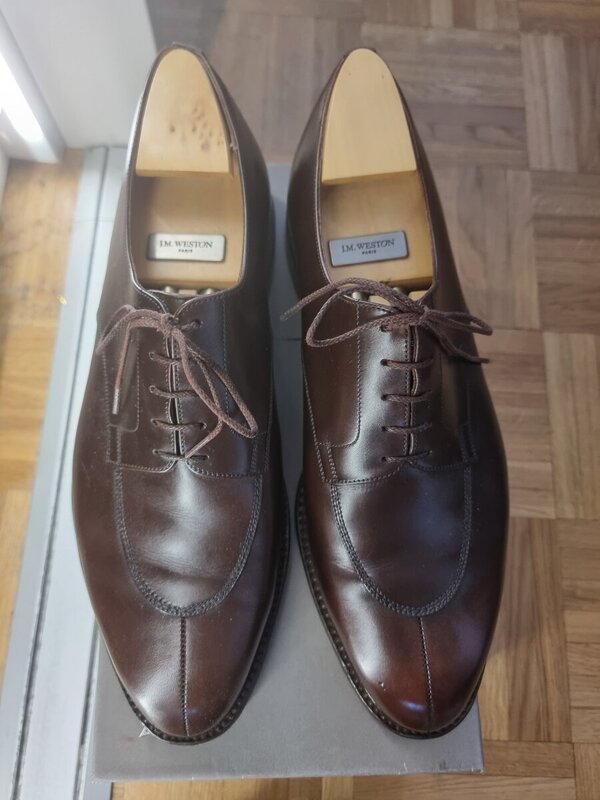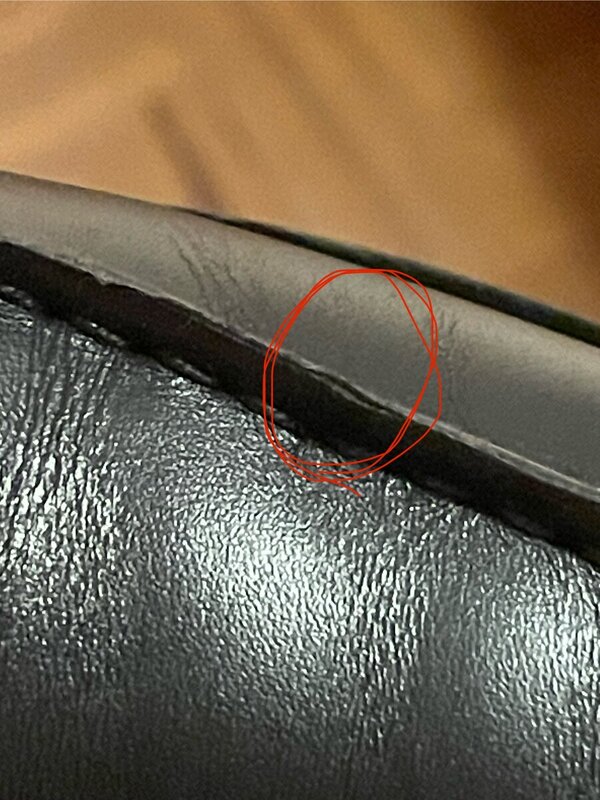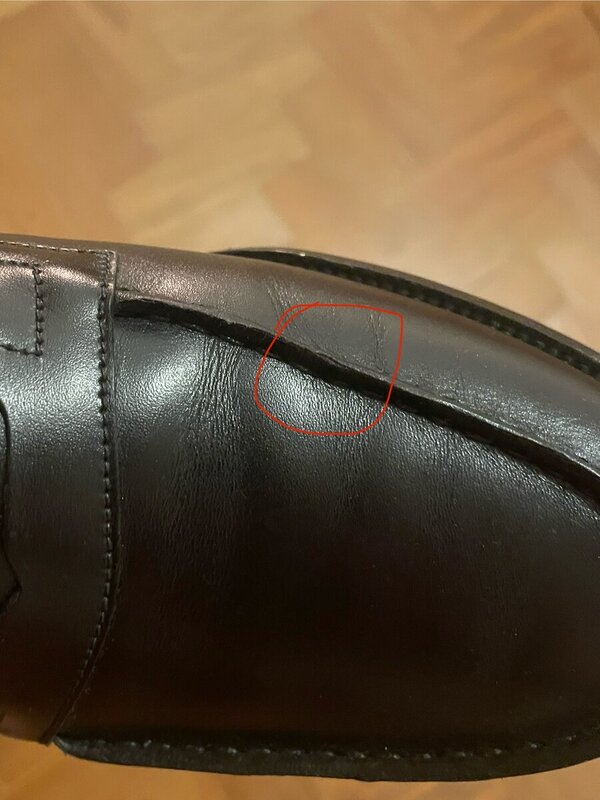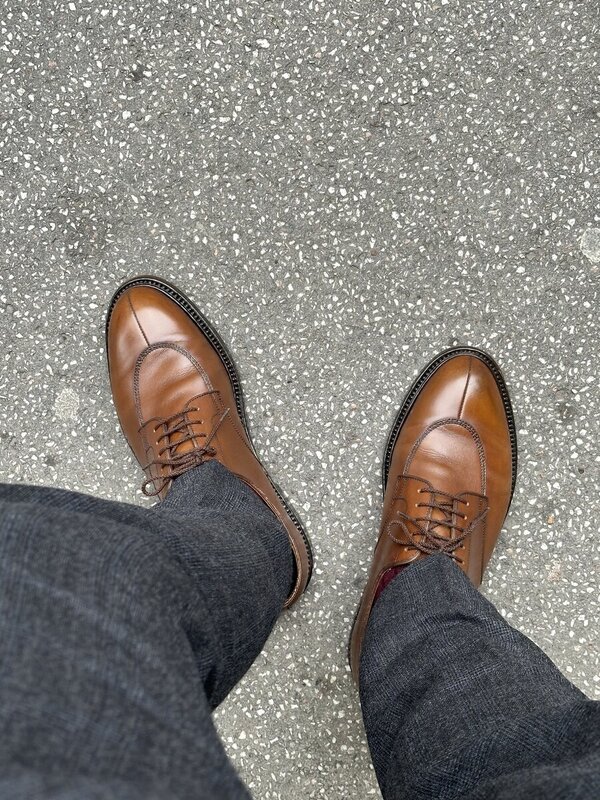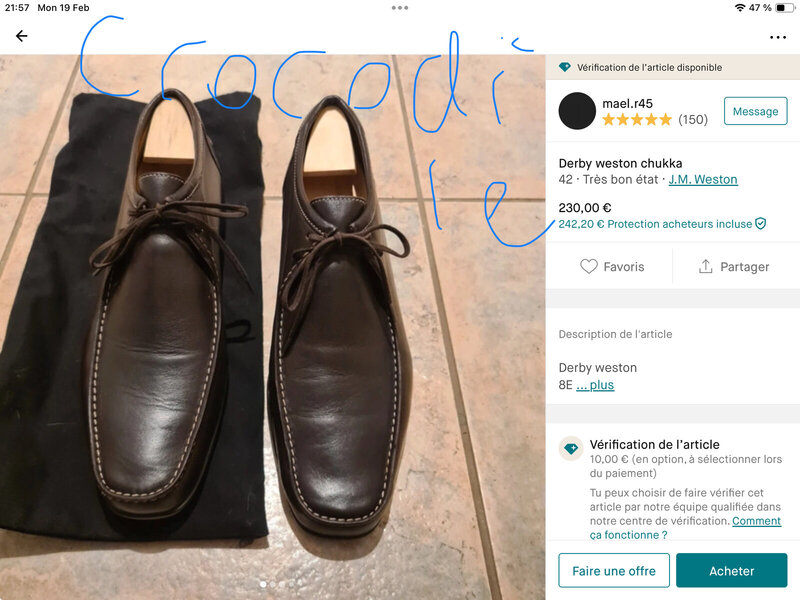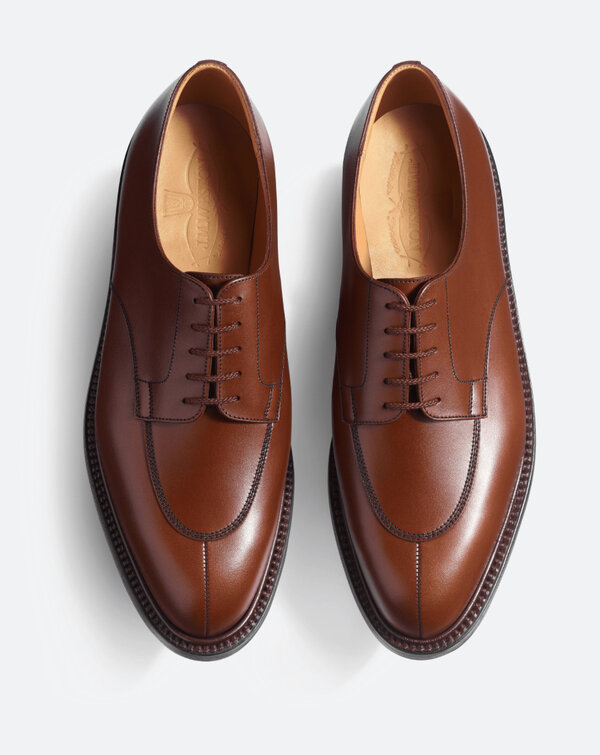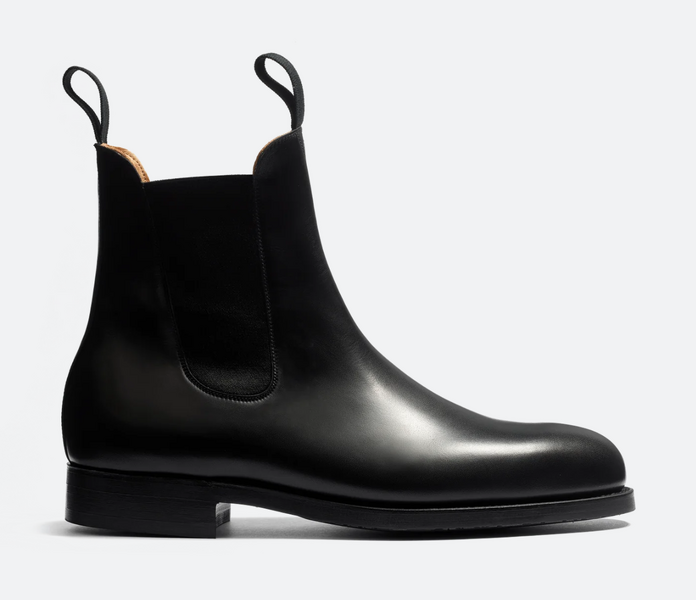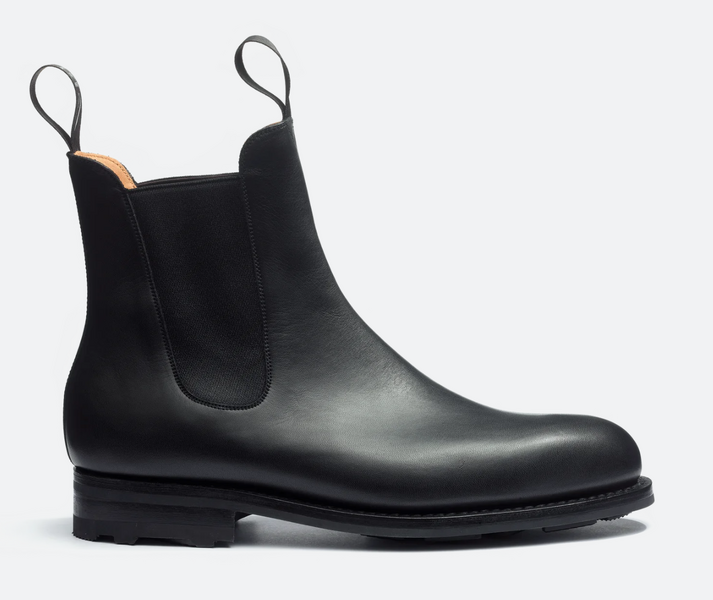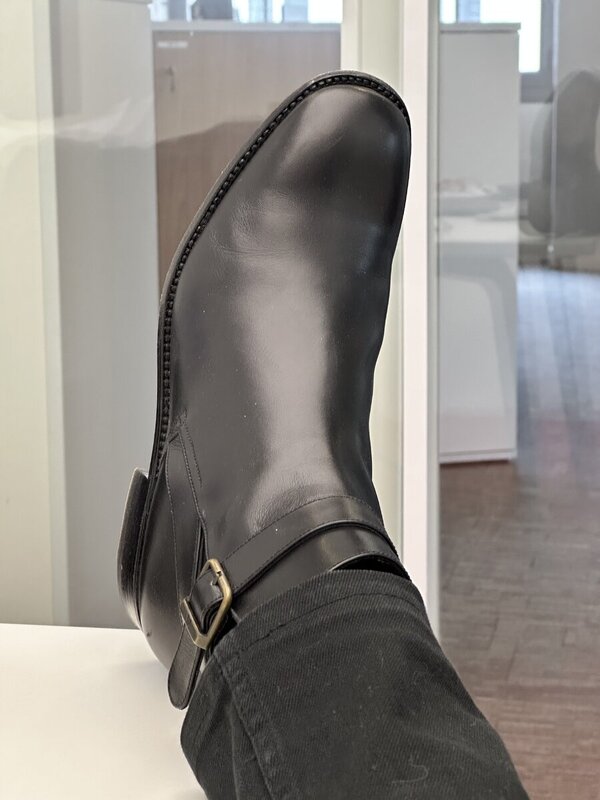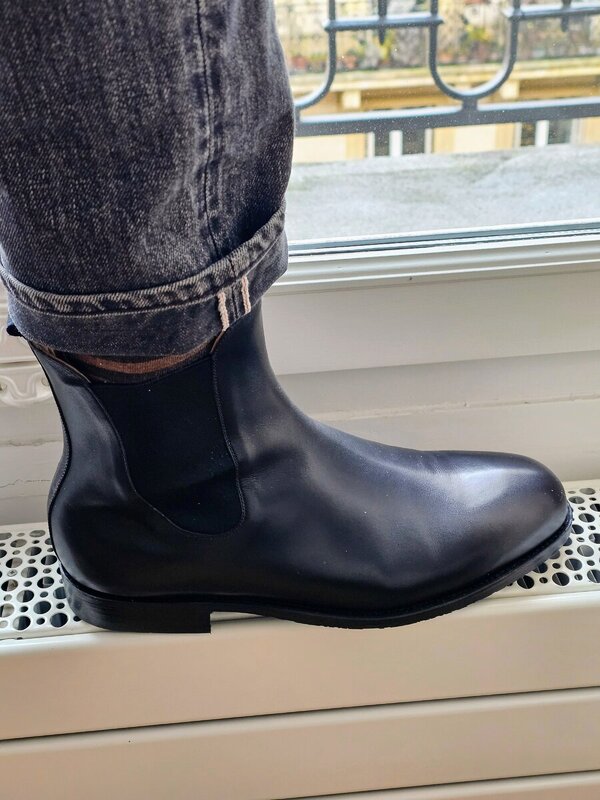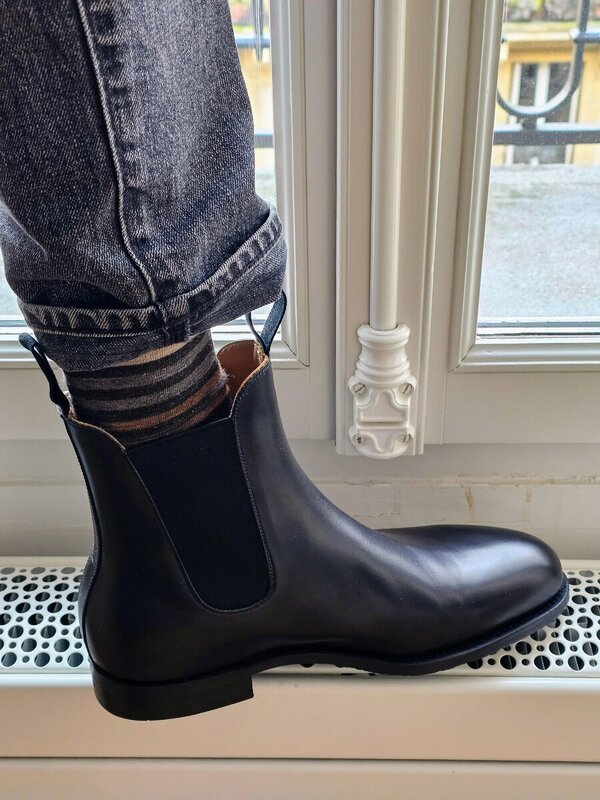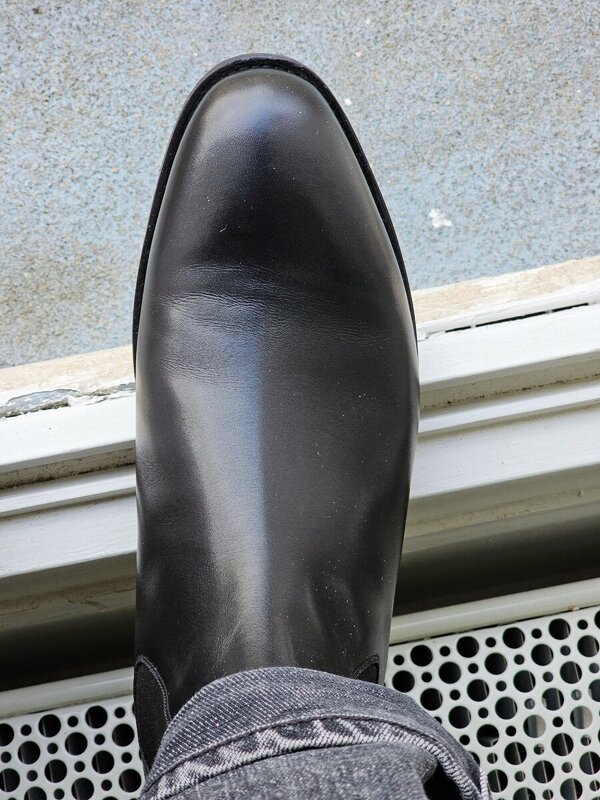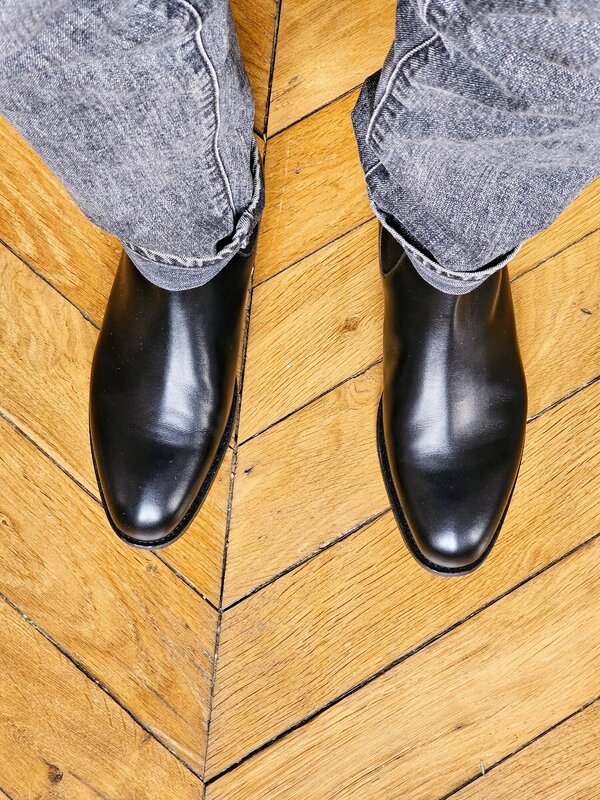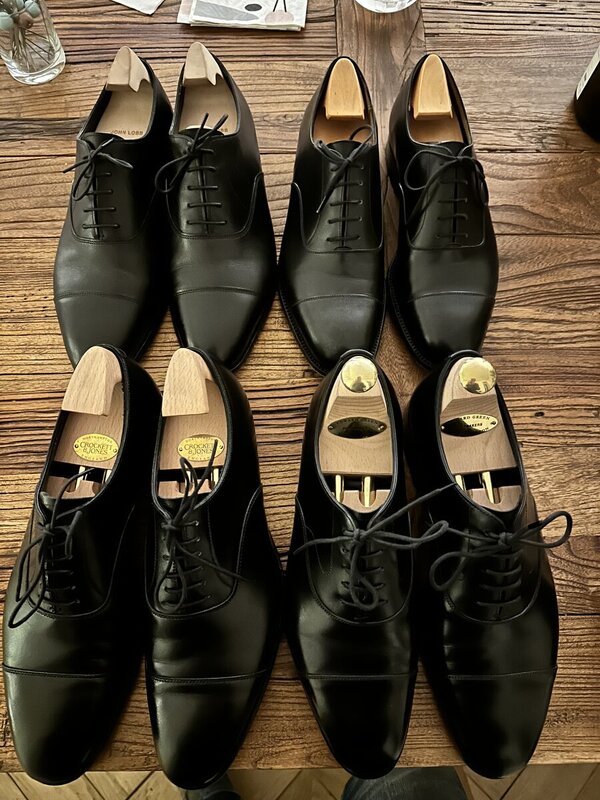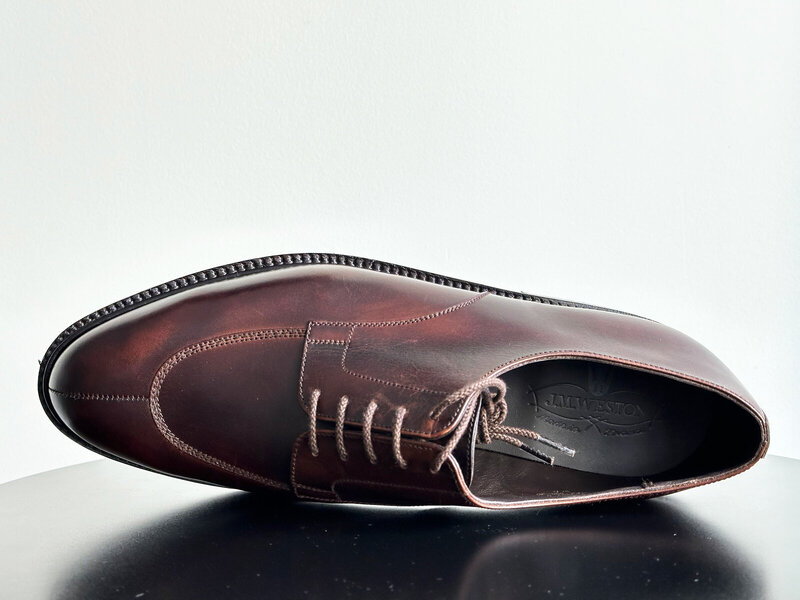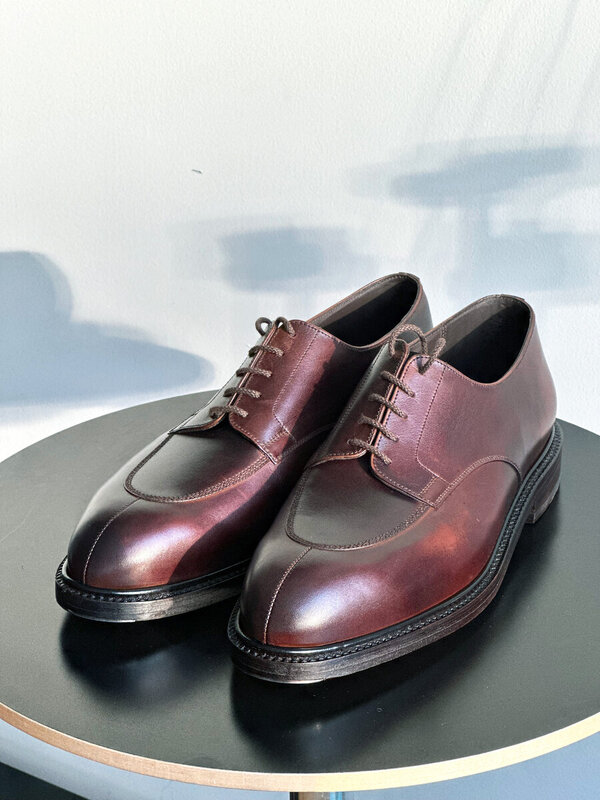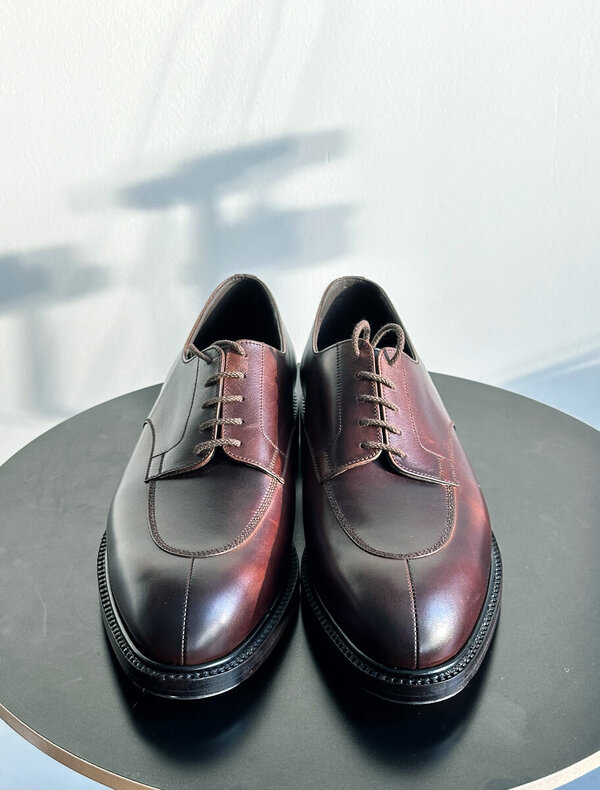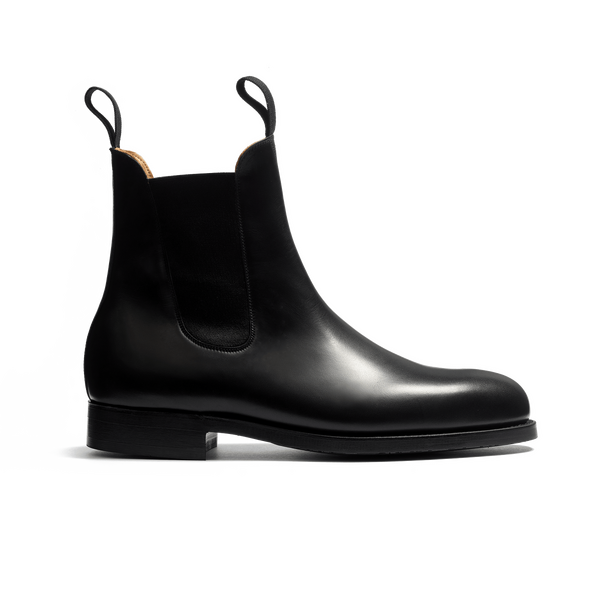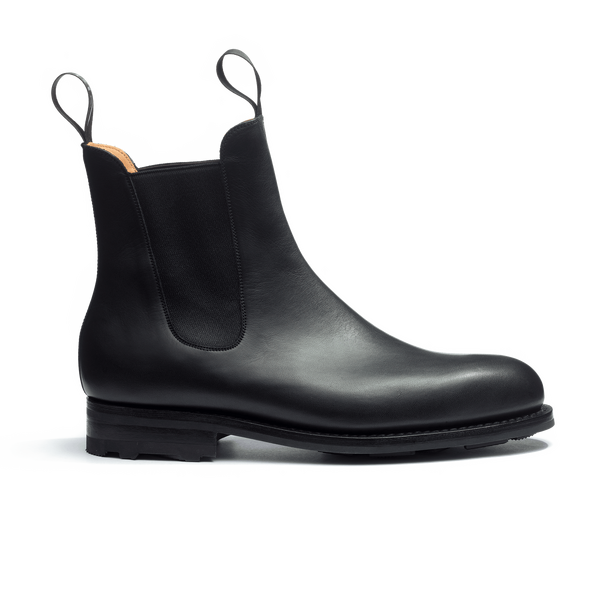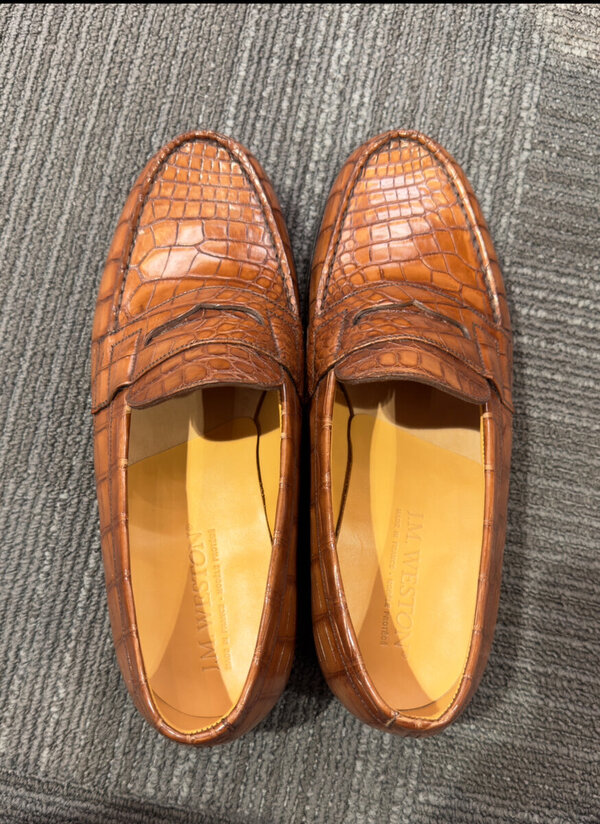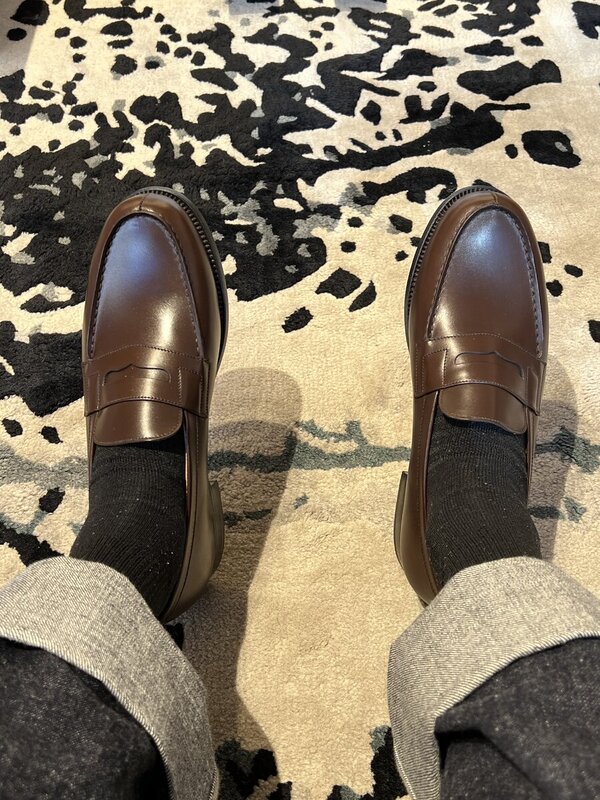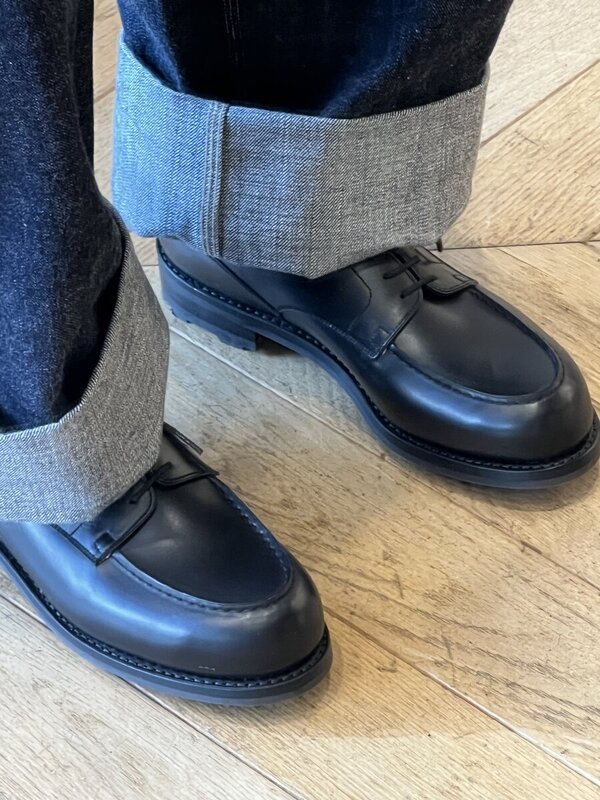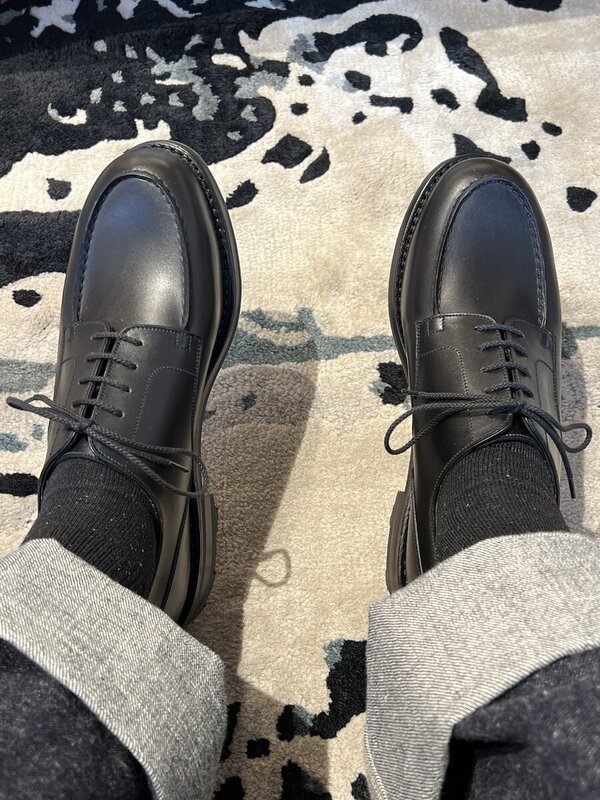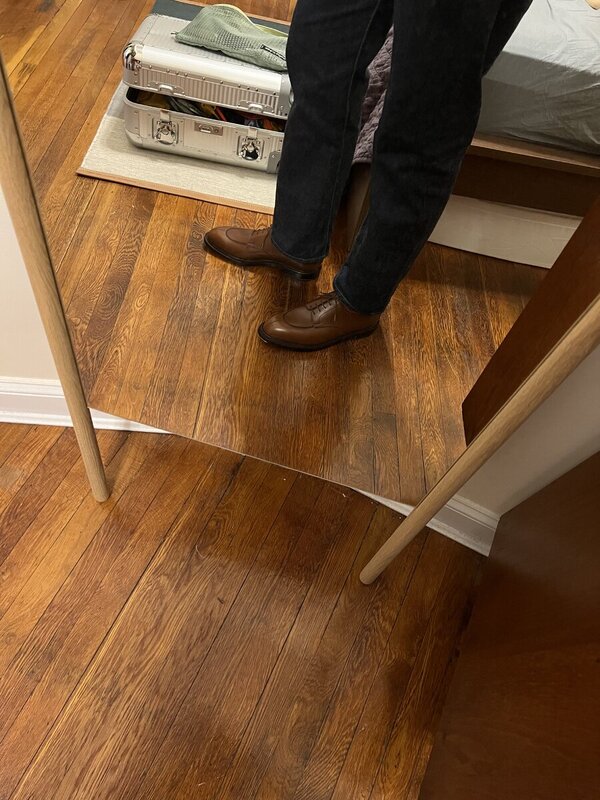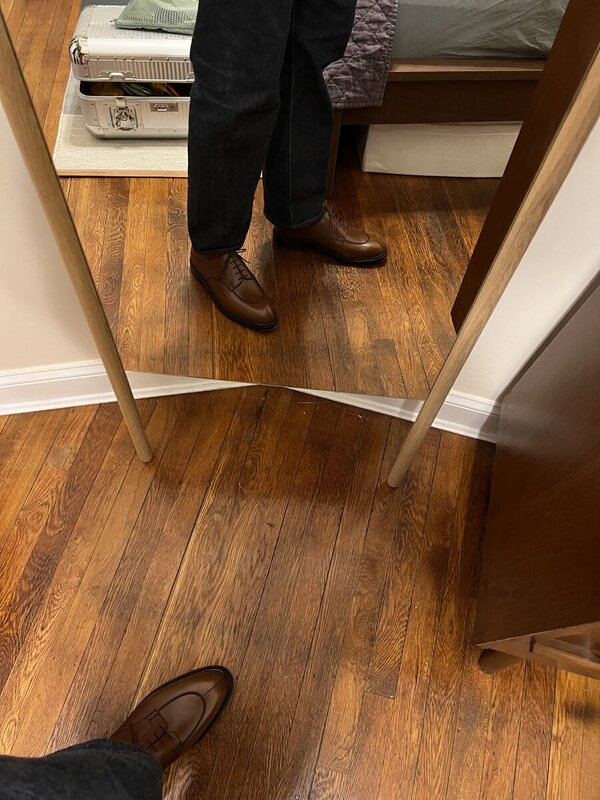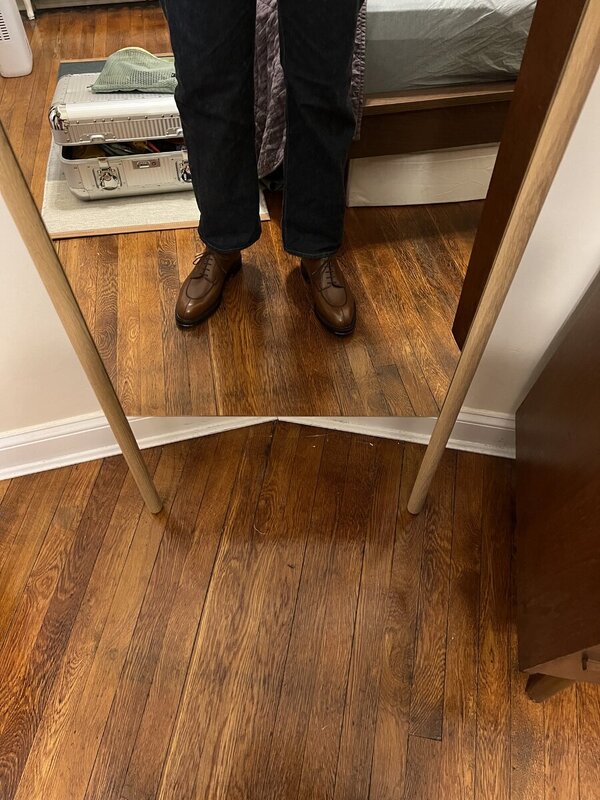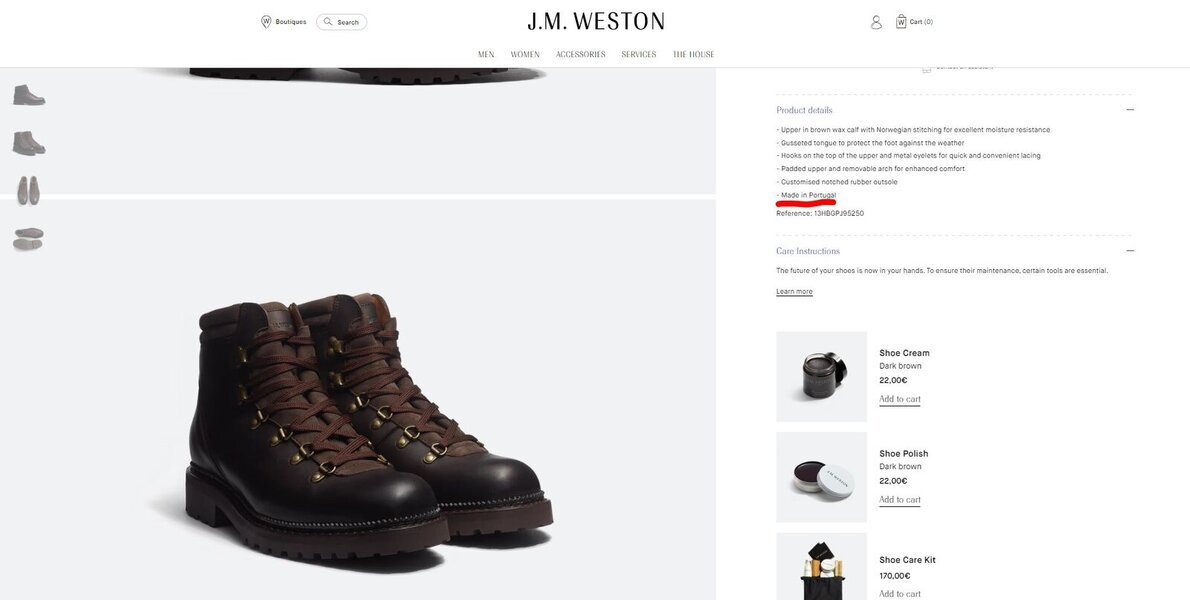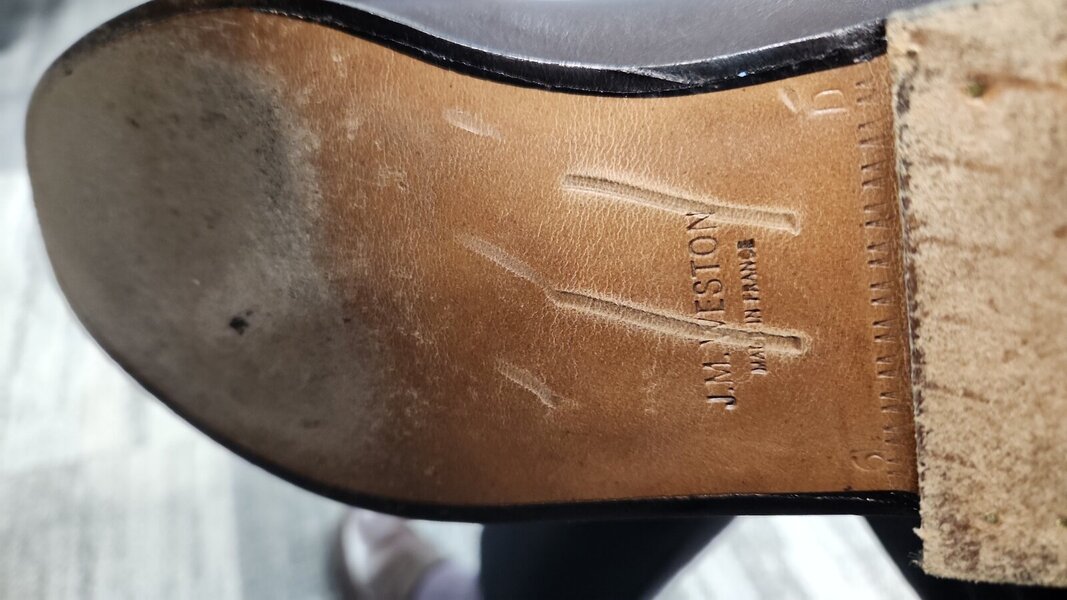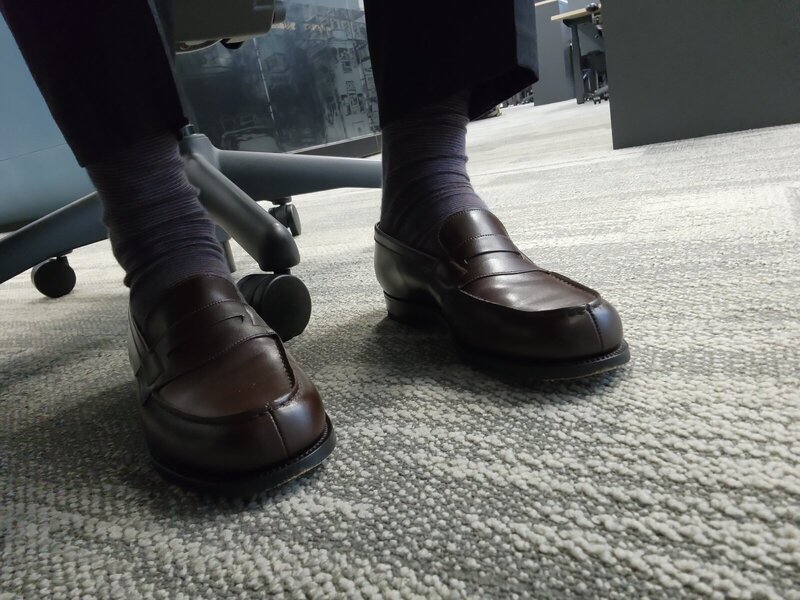Going to give a secret tip that has worked for me in the past and with my beautiful 180 vintage suede loafer. Simply know your width. The important thing is to measure the loafer from the heel to the tip of toe. You have to know what is your measurement on this for loafers in general. Not pointy loafers but a similar last model. Then again if you have a high instep or too much foot irregularities this might not work. If you have a relatively normal foot, you shouldn't have a problem
Support the forum
Navigation
-
- Men's Style
- Classic Menswear
- Streetwear and Denim
- Preorders, Group Made-to-order, trunk shows, and o
- Menswear Advice
- Former Affiliate Vendor Threads; a Locked Forum.
- Career and job listings in fashion, mens clothing,
-
- American Trench
- AMIDÉ HADELIN
- Archibald London
- The Armoury
- Arterton
- Besnard
- Canoe Club
- Capra Leather
- Carmina
- Cavour
- Crush Store
- De Bonne Facture
- Drinkwater's Cambridge
- Drop93
- eHABERDASHER
- Enzo Custom
- Epaulet
- Exquisite Trimmings
- Fils Unique
- Gentlemen's Footwear
- Giin
- Grant Stone
- House of Huntington
- IsuiT
- John Elliott
- Jonathan Abel
- Kent Wang
- Kirby Allison
- Larimars Clothing
- Lazy Sun
- LuxeSwap
- Luxire Custom Clothing
- Nicks Boots
- No Man Walks Alone
- Once a Day
- Passus shoes
- Proper Cloth
- SARTORIALE
- SEH Kelly
- Self Edge
- Shop the Finest
- Skoaktiebolaget
- Spier and MacKay
- Standard and Strange
- Bespoke Shoemaker Szuba
- Taylor Stitch
- TLB Mallorca
- UNI/FORM LA
- Vanda Fine Clothing
- Von Amper
- Wrong Weather
- Yeossal
- Zam Barrett
Install the app
More options
-
Hi, I am the owner and main administrator of Styleforum. If you find the forum useful and fun, please help support it by buying through the posted links on the forum. Our main, very popular sales thread, where the latest and best sales are listed, are posted HERE
Purchases made through some of our links earns a commission for the forum and allows us to do the work of maintaining and improving it. Finally, thanks for being a part of this community. We realize that there are many choices today on the internet, and we have all of you to thank for making Styleforum the foremost destination for discussions of menswear. -
This site contains affiliate links for which Styleforum may be compensated.
-
STYLE. COMMUNITY. GREAT CLOTHING.
Bored of counting likes on social networks? At Styleforum, you’ll find rousing discussions that go beyond strings of emojis.
Click Here to join Styleforum's thousands of style enthusiasts today!
Styleforum is supported in part by commission earning affiliate links sitewide. Please support us by using them. You may learn more here.
You are using an out of date browser. It may not display this or other websites correctly.
You should upgrade or use an alternative browser.
You should upgrade or use an alternative browser.
JM Weston appreciation thread
- Thread starter lucci
- Start date
- Watchers 138
AunToni
Senior Member
- Joined
- Jun 7, 2017
- Messages
- 475
- Reaction score
- 338
Going to give a secret tip that has worked for me in the past and with my beautiful 180 vintage suede loafer. Simply know your width. The important thing is to measure the loafer from the heel to the tip of toe. You have to know what is your measurement on this for loafers in general. Not pointy loafers but a similar last model. Then again if you have a high instep or too much foot irregularities this might not work. If you have a relatively normal foot, you shouldn't have a problem
I'm not sure what you are saying. You said know your width, but also to measure the 180 loafer from heel to the tip of the toe? What good is that in helping you to determine what other lasts/models from other brands will fit you?
You need to know the length of your foot and the width, and if you can, the height of your arch if you have a high instep. These numbers are useful because you can send them to the company, whichever company that may be, and they can suggest lasts, size, and width that will fit your foot best. This goes for "pointy" loafers as well. In fact, it goes for all shoes. However, loafers are tricky compared to shoes with laces or buckles for obvious reasons.
Last edited:
- Joined
- Jan 8, 2008
- Messages
- 10,132
- Reaction score
- 5,714
I'm not sure what you are saying. You said know your width, but also to measure the 180 loafer from heel to the tip of the toe? What good is that in helping you to determine what other lasts/models from other brands will fit you?
You need to know the length of your foot and the width, and if you can, the height of your arch if you have a high instep. These numbers are useful because you can send them to the company, whichever company that may be, and they can suggest lasts, size, and width that will fit your foot best. This goes for "pointy" loafers as well. In fact, it goes for all shoes. However, loafers are tricky compared to shoes with laces or buckles for obvious reasons.
FWIW, few, if any customers who order RTW, or even MTO, long distance know the length of their foot or the width much less the height of the instep. Not accurately, at any rate, and not such that a guess wouldn't be almost as good.
The real question(s) ought to be: the length, from where to where? the width, from where to where? and the height of the instep, where and how?
In point of fact, any length measurement really ought to involve two measurements--back of heel to end of longest toe (LOF) and back of heel to medial ball joint (H-B).
Similarly, the width of the heel 'seat' is almost as important as the width across the joints.
And the height of the instep is near-as-nevermind useless...if only because the instep of the foot extends from the waist to the ankle. That can be a distance of several inches. Insteps are more correctly measured as girths (often in tandem with heel measurements), and when such are factored in, an instep "height" is almost immaterial--a well made shoe is not rigid like a clog.
IMO, YMMV...FWIW...
Last edited:
AunToni
Senior Member
- Joined
- Jun 7, 2017
- Messages
- 475
- Reaction score
- 338
As someone with a high arch, I disagree with you about the measurement being useless, but I do agree with you about how it is measured, I misspoke. I also agree with your more specific points about how to measure your foot. However, in my personal experience, I do not think these measurements are useless when ordering online and trying to figure out if a ready to wear shoe that you are not familiar with will fit or not or what size or what width to go with. Simply because few customers who order RTW don't know these numbers, doesn't mean a guess would do just as well.FWIW, few, if any customers who order RTW, or even MTO, long distance know the length of their foot or the width much less the height of the instep. Not accurately, at any rate, and not such that a guess wouldn't be almost as good.
The real question(s) ought to be: the length, from where to where? the width, from where to where? and the height of the instep, where and how?
In point of fact, any length measurement really ought to involve two measurements--back of heel to end of longest toe (LOF) and back of heel to medial ball joint (H-B).
Similarly, the width of the heel 'seat' is almost as important as the width across the joints.
And the height of the instep is near-as-nevermind useless...if only because the instep of the foot extends from the waist to the ankle. That can be a distance of several inches. Insteps are more correctly measured as girths (often in tandem with heel measurements) and when such are factored in, an instep "height" is almost immaterial--a well made shoe is not rigid like a clog.
IMO, YMMV...FWIW...
Case in point, Tricker's had asked me to measure my foot at its widest point and give them this number so they can help determine which lasts would fit my foot. As someone who had no experience with the brand, this was helpful and saved me time and money because the lasts that would fit my food were only a few and none that I was interested in.
yunBW
Senior Member
- Joined
- Dec 26, 2015
- Messages
- 739
- Reaction score
- 168
I believe I have a high instep and it really cause me a lot of problems when trying a loafer that fits. Since there are time where the width and length fit for the loafer but the vamp of the shoes will dig into my instep in an uncomfortable way. This recently happened when I tried on the Alden loafer where the vamp is botherline painful when wearing it.FWIW, few, if any customers who order RTW, or even MTO, long distance know the length of their foot or the width much less the height of the instep. Not accurately, at any rate, and not such that a guess wouldn't be almost as good.
The real question(s) ought to be: the length, from where to where? the width, from where to where? and the height of the instep, where and how?
In point of fact, any length measurement really ought to involve two measurements--back of heel to end of longest toe (LOF) and back of heel to medial ball joint (H-B).
Similarly, the width of the heel 'seat' is almost as important as the width across the joints.
And the height of the instep is near-as-nevermind useless...if only because the instep of the foot extends from the waist to the ankle. That can be a distance of several inches. Insteps are more correctly measured as girths (often in tandem with heel measurements) and when such are factored in, an instep "height" is almost immaterial--a well made shoe is not rigid like a clog.
IMO, YMMV...FWIW...
imo the whole instep issue is somewhat determined on where the vamp stops for the loafer as well as the structure of the shoes, unlined loafer seems much more forgiving when compared to lined. However, what you’re stating definitely make sense
Last edited:
- Joined
- Jan 8, 2008
- Messages
- 10,132
- Reaction score
- 5,714
Well, I am coming at it from a long-time understanding of the foot as it relates to footwear.
As I mentioned, the instep actually extends from the waist to the ankle. Where, and from where, on that expanse, will you measure the instep? Will the maker know where you are measuring it? I actually take two instep measurements--one corresponding to the root of the fifth and another over the middle cuneiform. Of course, these are girths but it illustrates that both are legitimately 'insteps' and at very different heights relative to the plantar surface of the foot (ground).
And that brings up another issue...do you measure your instep flatfooted or on a heel? The instep of the foot...the height...will change as the foot is elevated...and not just because the foot is elevated, but because the skeletal structure shifts throwing the instep forward and upward.
Again, a foot is not rigid and neither is a shoe. The foot is more like a water balloon--if you squeeze the sides, forcing the top surface upward, the girth measurement remains the same as if the balloon were at rest. If you flatten the balloon, again the girths remain the same (the analogy isn't perfect...rubber stretches). All other things being equal, the well made shoe can accommodate an infinite number of instep heights...as long as the measurements are true to the foot.
Of utmost importance to a maker who really wants to understand feet and fitting is to recognize the relationship between the instep (wherever it is located) and the long heel measurement. They are co-dependent. The instep girth can be right on the money but if the long heel is too large the shoe will not fit properly. And vice versa as well as several other permutations.
Similarly, if the width across the widest part of the foot is spot-on but the width (and girth) from the medial ball to the lateral ball is off, the shoe will not fit. And if the width across the heel seat is off (not taken into consideration--many people have wide foreparts and narrow heels) the shoe will not fit...and heelseat width can be an important factor in the fit of a shoe in the instep and topline.
Guarantee you that you can resort to any number of half-baked and short-cut numbers and occasionally they will work adequately...for one maker, although not necessarily for another. And almost as certain, the maker looks at your figures, guesses at a size and then tosses your figures out the door. Because ultimately, you are guessing. And for the maker the figures are only a small percentage of what is really required to fit you more than adequately.
But that said, "even a blind hog finds a truffle ever now and again."
And having said that, I am not criticizing your impulse to send the maker numbers that you think are relevent. I applaud that impulse. I am simply pointing out the realities of foot sizing and shoe fit and hoping to give you some deeper insights into how it all works.
As I mentioned, the instep actually extends from the waist to the ankle. Where, and from where, on that expanse, will you measure the instep? Will the maker know where you are measuring it? I actually take two instep measurements--one corresponding to the root of the fifth and another over the middle cuneiform. Of course, these are girths but it illustrates that both are legitimately 'insteps' and at very different heights relative to the plantar surface of the foot (ground).
And that brings up another issue...do you measure your instep flatfooted or on a heel? The instep of the foot...the height...will change as the foot is elevated...and not just because the foot is elevated, but because the skeletal structure shifts throwing the instep forward and upward.
Again, a foot is not rigid and neither is a shoe. The foot is more like a water balloon--if you squeeze the sides, forcing the top surface upward, the girth measurement remains the same as if the balloon were at rest. If you flatten the balloon, again the girths remain the same (the analogy isn't perfect...rubber stretches). All other things being equal, the well made shoe can accommodate an infinite number of instep heights...as long as the measurements are true to the foot.
Of utmost importance to a maker who really wants to understand feet and fitting is to recognize the relationship between the instep (wherever it is located) and the long heel measurement. They are co-dependent. The instep girth can be right on the money but if the long heel is too large the shoe will not fit properly. And vice versa as well as several other permutations.
Similarly, if the width across the widest part of the foot is spot-on but the width (and girth) from the medial ball to the lateral ball is off, the shoe will not fit. And if the width across the heel seat is off (not taken into consideration--many people have wide foreparts and narrow heels) the shoe will not fit...and heelseat width can be an important factor in the fit of a shoe in the instep and topline.
Guarantee you that you can resort to any number of half-baked and short-cut numbers and occasionally they will work adequately...for one maker, although not necessarily for another. And almost as certain, the maker looks at your figures, guesses at a size and then tosses your figures out the door. Because ultimately, you are guessing. And for the maker the figures are only a small percentage of what is really required to fit you more than adequately.
But that said, "even a blind hog finds a truffle ever now and again."

And having said that, I am not criticizing your impulse to send the maker numbers that you think are relevent. I applaud that impulse. I am simply pointing out the realities of foot sizing and shoe fit and hoping to give you some deeper insights into how it all works.
AunToni
Senior Member
- Joined
- Jun 7, 2017
- Messages
- 475
- Reaction score
- 338
I understand.Well, I am coming at it from a long-time understanding of the foot as it relates to footwear.
As I mentioned, the instep actually extends from the waist to the ankle. Where, and from where, on that expanse, will you measure the instep? Will the maker know where you are measuring it? I actually take two instep measurements--one corresponding to the root of the fifth and another over the middle cuneiform. Of course, these are girths but it illustrates that both are legitimately 'insteps' and at very different heights relative to the plantar surface of the foot (ground).
And that brings up another issue...do you measure your instep flatfooted or on a heel? The instep of the foot...the height...will change as the foot is elevated...and not just because the foot is elevated, but because the skeletal structure shifts throwing the instep forward and upward.
Again, a foot is not rigid and neither is a shoe. The foot is more like a water balloon--if you squeeze the sides, forcing the top surface upward, the girth measurement remains the same as if the balloon were at rest. If you flatten the balloon, again the girths remain the same (the analogy isn't perfect...rubber stretches). All other things being equal, the well made shoe can accommodate an infinite number of instep heights...as long as the measurements are true to the foot.
Of utmost importance to a maker who really wants to understand feet and fitting is to recognize the relationship between the instep (wherever it is located) and the long heel measurement. They are co-dependent. The instep girth can be right on the money but if the long heel is too large the shoe will not fit properly. And vice versa as well as several other permutations.
Similarly, if the width across the widest part of the foot is spot-on but the width (and girth) from the medial ball to the lateral ball is off, the shoe will not fit. And if the width across the heel seat is off (not taken into consideration--many people have wide foreparts and narrow heels) the shoe will not fit...and heelseat width can be an important factor in the fit of a shoe in the instep and topline.
Guarantee you that you can resort to any number of half-baked and short-cut numbers and occasionally they will work adequately...for one maker, although not necessarily for another. And almost as certain, the maker looks at your figures, guesses at a size and then tosses your figures out the door. Because ultimately, you are guessing. And for the maker the figures are only a small percentage of what is really required to fit you more than adequately.
But that said, "even a blind hog finds a truffle ever now and again."
And having said that, I am not criticizing your impulse to send the maker numbers that you think are relevent. I applaud that impulse. I am simply pointing out the realities of foot sizing and shoe fit and hoping to give you some deeper insights into how it all works.
So, I ask you, since I have a high arch, how am I to determine if my foot will fit inside a shoe? Aside from actually trying on the shoe, of course. I have tried on many shoes where I cannot get the top of my arch into the shoe.
- Joined
- Jan 8, 2008
- Messages
- 10,132
- Reaction score
- 5,714
There is no way for someone at a remove, to know with any certainty...and I stress the word "know"....what your foot looks like, what the footprint looks like, what the instep or LH measurements are. Even if you send measurements such as you mentioned before, th emaker doesn't know where on your foot, and relative to his lasts, you have located the instep...for example. All he can do is guess.
Barring that information, it's all guessing. There's no way to diagnose the problem, much less recommend a solution. And while there's a much greater chance that over 50 years of dealing with fit and feet...personally, intimately...I might have purposefully dealt with similar problems, I would still be guessing. To someone with whom you have never met or spoken, and to whom you are just one of a hundred customers on any given day, the issue becomes infinitely more pronounced.
The only way you can determine if a shoe will fit is to try it on. Even bespoke makers rely on 'fitter's models'--try/trial shoes.
The only realistic alternative is to have your foot measured and if possible have a last made. One you could send to a maker, RTW or otherwise, who will deal with you one-on-one.
Or go bespoke.
Sorry, no answers, but no 'magical thinking', either.
Barring that information, it's all guessing. There's no way to diagnose the problem, much less recommend a solution. And while there's a much greater chance that over 50 years of dealing with fit and feet...personally, intimately...I might have purposefully dealt with similar problems, I would still be guessing. To someone with whom you have never met or spoken, and to whom you are just one of a hundred customers on any given day, the issue becomes infinitely more pronounced.
The only way you can determine if a shoe will fit is to try it on. Even bespoke makers rely on 'fitter's models'--try/trial shoes.
The only realistic alternative is to have your foot measured and if possible have a last made. One you could send to a maker, RTW or otherwise, who will deal with you one-on-one.
Or go bespoke.
Sorry, no answers, but no 'magical thinking', either.
AunToni
Senior Member
- Joined
- Jun 7, 2017
- Messages
- 475
- Reaction score
- 338
There is no way for someone at a remove, to know with any certainty...and I stress the word "know"....what your foot looks like, what the footprint looks like, what the instep or LH measurements are. Even if you send measurements such as you mentioned before, th emaker doesn't know where on your foot, and relative to his lasts, you have located the instep...for example. All he can do is guess.
Barring that information, it's all guessing. There's no way to diagnose the problem, much less recommend a solution. And while there's a much greater chance that over 50 years of dealing with fit and feet...personally, intimately...I might have purposefully dealt with similar problems, I would still be guessing. To someone with whom you have never met or spoken, and to whom you are just one of a hundred customers on any given day, the issue becomes infinitely more pronounced.
The only way you can determine if a shoe will fit is to try it on. Even bespoke makers rely on 'fitter's models'--try/trial shoes.
The only realistic alternative is to have your foot measured and if possible have a last made. One you could send to a maker, RTW or otherwise, who will deal with you one-on-one.
Or go bespoke.
Sorry, no answers, but no 'magical thinking', either.
So, basically, no harm in measuring the foot and sending it to the RTW brand so they can guess for you. Got it. haha.
AunToni
Senior Member
- Joined
- Jun 7, 2017
- Messages
- 475
- Reaction score
- 338
nice collection. have you had any of these resoled? If so, do you send them to JMW or use a local cobbler?A couple of family pictures to lighten up the thread a tad.
View attachment 1418075
View attachment 1418076
nice collection. have you had any of these resoled? If so, do you send them to JMW or use a local cobbler?
the ostrich, brown lizard, black calf have been previously resoled at the factory with leather sole, the green one is from the vintage collection so it has also been completely resoled there and the black lizard just came back from Limoges with the chunky rubber sole normally found on the deck derby. They refused to work on the brown suede so I guess I'm gonna turn to a renowned cobbler ( the brown gators are probably going the same way). I plan to send the crocodile ones ( mahogany) to the factory in a little while, they are from around 1975.
AunToni
Senior Member
- Joined
- Jun 7, 2017
- Messages
- 475
- Reaction score
- 338
If you don't mind me asking, do you live in a country where there is a JWM store? And how do you send your shoes to the factory?the ostrich, brown lizard, black calf have been previously resoled at the factory with leather sole, the green one is from the vintage collection so it has also been completely resoled there and the black lizard just came back from Limoges with the chunky rubber sole normally found on the deck derby. They refused to work on the brown suede so I guess I'm gonna turn to a renowned cobbler ( the brown gators are probably going the same way). I plan to send the crocodile ones ( mahogany) to the factory in a little while, they are from around 1975.
I only had one pair resoled and the work was good, but I did that when there was a JWM store in the country I live in, but that store has since been closed. So, I'm curious if you have experience mailing the shoes directly to the factory and how that goes.
- Joined
- Jan 8, 2008
- Messages
- 10,132
- Reaction score
- 5,714
So, basically, no harm in measuring the foot and sending it to the RTW brand so they can guess for you. Got it. haha.
No, no harm.
And as long as it's just you...no harm in telling yourself it works.
But "every form of refuge has its price." I suspect you could have your foot professionally measured and a last created for less than a pair of high end RTW shoes. Maybe less than a pair of mid level shoes.
Once that was done, I don't know what it would take to convince a manufacturer to drop your lasts into their production run for a particular model, but you could do that all over the world....for the same price or not much more than you are paying now.
For the rest of your life.
No JMW store in Northern Europe, I send the shoes to one of the shops in Paris and pick them up back when on a trip in Paris or have them sent back to me. ( I also have family in France as an other option).If you don't mind me asking, do you live in a country where there is a JWM store? And how do you send your shoes to the factory?
I only had one pair resoled and the work was good, but I did that when there was a JWM store in the country I live in, but that store has since been closed. So, I'm curious if you have experience mailing the shoes directly to the factory and how that goes.
FEATURED PRODUCTS
-
 LuxeSwap Auction - Kiton Napoli 100% GUANACO Camel Flannel DB Top Coat
A virtual unicorn, this 100% pure Guanaco double breasted top coat by Kiton combines one of the worlds rarest fabrics with one of the worlds most exclusive brands. Retail on this item was deep in the double digits, and is being offered at auction with a $9.99 starting bid with no reserve.
LuxeSwap Auction - Kiton Napoli 100% GUANACO Camel Flannel DB Top Coat
A virtual unicorn, this 100% pure Guanaco double breasted top coat by Kiton combines one of the worlds rarest fabrics with one of the worlds most exclusive brands. Retail on this item was deep in the double digits, and is being offered at auction with a $9.99 starting bid with no reserve.
-
 Nicks Boots - Wickett & Craig English Bridle Veg Tan Leather - $759
These boots are made from 6.5 oz Wickett & Craig English Bridle Leather. This tannery has been making leather the old fashioned way since 1867. Each side can take about six weeks to produce, making it a significantly longer production time than most leather on the market.
Nicks Boots - Wickett & Craig English Bridle Veg Tan Leather - $759
These boots are made from 6.5 oz Wickett & Craig English Bridle Leather. This tannery has been making leather the old fashioned way since 1867. Each side can take about six weeks to produce, making it a significantly longer production time than most leather on the market.
-
Besnard - Made to Order Trousers - $351 Design your ideal pair of trousers by selecting a fabric, deciding between single or double pleats, choosing a zip or button fly, and opting for side adjusters or belt loops.
Latest posts
- Replies
- 39,806
- Views
- 5,869,799
- Replies
- 0
- Views
- 1
- Replies
- 84,230
- Views
- 12,452,163
- Replies
- 13,346
- Views
- 2,925,585
Similar threads
- Replies
- 1,320
- Views
- 202,144
- Replies
- 7
- Views
- 5,118
- Replies
- 30
- Views
- 13,469
Featured Sponsor
Forum Sponsors
- American Trench
- AMIDÉ HADELIN
- Archibald London
- The Armoury
- Arterton
- Besnard
- Canoe Club
- Capra Leather
- Carmina
- Cavour
- Crush Store
- De Bonne Facture
- Drinkwater's Cambridge
- Drop93
- eHABERDASHER
- Enzo Custom
- Epaulet
- Exquisite Trimmings
- Fils Unique
- Gentlemen's Footwear
- Giin
- Grant Stone
- House of Huntington
- IsuiT
- John Elliott
- Jonathan Abel
- Kent Wang
- Kirby Allison
- Larimars Clothing
- Lazy Sun
- LuxeSwap
- Luxire Custom Clothing
- Nicks Boots
- No Man Walks Alone
- Once a Day
- Passus shoes
- Proper Cloth
- SARTORIALE
- SEH Kelly
- Self Edge
- Shop the Finest
- Skoaktiebolaget
- Spier and MacKay
- Standard and Strange
- Bespoke Shoemaker Szuba
- Taylor Stitch
- TLB Mallorca
- UNI/FORM LA
- Vanda Fine Clothing
- Von Amper
- Wrong Weather
- Yeossal
- Zam Barrett
Members online
- te0o
- lagsun
- blewnote1
- C&A
- metamodernman
- ramdomthought
- Gibonius
- ppk
- claytonwhittaker
- averagebootenjoyer
- Sapianwear
- ianskelly
- An Acute Style
- Alternate
- comrade
- Duke Santos
- Paul_in_Buffalo
- circumspice
- MichaelPemulis
- camez_
- Idesofmarch17
- Phinis
- junaman
- L.deJong
- Strog
- woO
- Johan
- ComradeFP
- Texasmade
- aKula
- Jr Mouse
- C_kimlin920
- ojaw
- WashedMolasses
- SteveL91
- San780
- tertbutyl
- Laguna
- Lizard23
- Vasagatan
- thebeanieking
- krudsma
- LA Guy
- Hombre Secreto
- jj02138
- mockingboy
- Kangnamstyles
- Newcomer
- ColdEyedPugilist
- Michigan Planner
Total: 1,835 (members: 116, guests: 1,719)

